A 1967 dime with no mint mark is typically worth 10 cents face value due to high production quantities at Philadelphia mint. However, value increases significantly for high-grade specimens: MS-65 coins fetch several dollars, while those with Full Bands in MS-66 can reach $80. Exceptional MS-68 Full Bands examples have sold for over $2,800. Special Mint Set (SMS) dimes hold premium value. Key factors affecting worth include Full Bands on the torch, sharp strike quality, and overall preservation grade. Circulated coins remain at face value, but well-preserved uncirculated examples with complete torch band definition command substantially higher prices among collectors.
Finding a 1967 dime in your pocket change might seem unremarkable, but certain examples of this Roosevelt dime can fetch prices ranging from $80 to over $2,800. The key lies in understanding what separates a common 10-cent piece from a valuable collector’s item. While the Philadelphia Mint produced 2,244,007,320 dimes that year without mint marks, specific quality factors and minting errors can transform these seemingly ordinary coins into sought-after numismatic treasures.
Understanding the 1967 No Mint Mark Dime
The absence of a mint mark on 1967 dimes indicates production at the Philadelphia Mint, which was standard practice before 1980. These coins feature the Roosevelt design introduced in 1946, showing President Franklin D. Roosevelt on the obverse and a torch flanked by olive and oak branches on the reverse.
The composition consists of 75% copper and 25% nickel, with a total weight of 2.27 grams and a diameter of 17.91 millimeters. Unlike earlier dimes minted before 1965, these coins contain no silver content, which removed precious metal value from the equation and made condition the primary value determinant.
Most circulated 1967 dimes without mint marks remain worth their face value of 10 cents. The massive production numbers mean these coins appear regularly in circulation even today, making uncirculated and error specimens the only examples commanding premium prices.
Grade-Based Value Breakdown
The condition of a 1967 dime dramatically affects its market value. Professional grading services use the Sheldon Scale ranging from 1 to 70, with higher numbers indicating better preservation.
| Grade | Condition | Value Range |
|---|---|---|
| G-4 to F-12 | Heavily circulated | $0.10 |
| XF-40 to AU-58 | Light circulation | $0.10 to $0.25 |
| MS-60 to MS-63 | Uncirculated, minor marks | $0.50 to $2.00 |
| MS-64 | Uncirculated, attractive | $3.00 to $5.00 |
| MS-65 | Gem uncirculated | $8.00 to $15.00 |
| MS-66 | Premium gem | $20.00 to $40.00 |
| MS-67 | Superb gem | $60.00 to $150.00 |
| MS-68 | Exceptional | $300.00 to $1,000.00 |
These values represent standard strikes. However, certain specimens command substantially higher prices due to a specific quality designation that serious collectors actively pursue.
The Full Bands Premium
The most significant value factor for 1967 dimes involves the torch bands on the reverse. Full Bands designation requires all horizontal separation lines on the torch to display complete definition from edge to edge, a detail that requires exceptional striking pressure and perfectly aligned dies.
According to Heritage Auctions data, a 1967 dime graded MS-66 Full Bands sold for $288 in 2019, while the same grade without Full Bands brought only $25. The premium increases substantially at higher grades.
At the MS-67 Full Bands level, auction records show prices between $600 and $900. An MS-68 Full Bands specimen achieved a record price of $2,820 at a 2020 auction, demonstrating the rarity of perfectly struck examples from the massive Philadelphia production.
Fewer than 2% of 1967 dimes qualify for Full Bands designation, even among mint state examples. The combination of weak dies toward the end of production runs and the coin’s design characteristics made achieving full band separation uncommon despite the Philadelphia Mint’s modern equipment.
Special Mint Set Specimens
The United States Mint produced Special Mint Sets in 1967 as alternatives to proof sets, which were not offered from 1965 through 1967. These SMS coins received special handling and display distinctive characteristics that differentiate them from regular strikes.
Special Mint Set dimes feature a unique satin-like finish achieved through specialized die preparation and striking techniques. The surfaces show a plastic-like polish distinct from both circulation strikes and traditional proof finishes. Dies received hand polishing, and coins were struck on special presses with multiple impacts.
Approximately 1,863,344 SMS sets were produced in 1967, making these dimes less common than regular strikes but more available than traditional proofs. Standard SMS 1967 dimes in MS-65 condition typically sell for $8 to $12, while MS-67 specimens reach $45 to $65.
SMS dimes with Full Bands command significant premiums. An SMS MS-67 Full Bands example sold for $336 through Stack’s Bowers in 2021, while lower graded SMS-66 Full Bands pieces bring $120 to $180 at auction.
Notable Minting Errors and Varieties
While 1967 dimes lack the dramatic error varieties found in some years, several collectible mistakes and variations exist that add value beyond standard grades.
Double Die Obverse: Some 1967 dimes show slight doubling on Roosevelt’s profile, particularly visible on the motto “IN GOD WE TRUST” and the date. These minor doubled dies typically add $5 to $25 to the coin’s value depending on doubling strength and overall grade. Stronger examples in MS-65 have sold for $75 to $120.
Off-Center Strikes: Planchets that weren’t properly centered during striking create dramatic visual errors. A 10% off-center strike with full date visible commands $40 to $80, while 25% off-center examples reach $100 to $200. A 50% off-center 1967 dime sold for $432 in 2018, demonstrating collector interest in dramatic misalignments.
Clipped Planchet: These errors occur when the metal strip used for blanks overlaps during cutting, creating a straight or curved clip. Straight clips removing 5-10% of the planchet sell for $20 to $40, while larger curved clips bring $50 to $100 depending on size and overall condition.
Die Cracks and Cuds: Late die state errors show raised lines (die cracks) or raised blobs (die cuds) where metal fills breaks in the die. Small die cracks add minimal value, but major cuds covering significant portions of the design can bring $30 to $150 depending on size and location.
Broadstrikes: Coins struck without the retaining collar expand beyond normal diameter. These errors showing complete designs typically sell for $25 to $60, with exceptionally well-centered examples reaching $100.
Wrong Planchet Errors: Extremely rare instances exist of 1967 dimes struck on cent planchets or foreign coin blanks. These major errors command $500 to $2,000 depending on authentication and the specific wrong planchet type.
Authentication and Grading Considerations
Professional grading through services like PCGS or NGC provides authentication and standardized condition assessment that significantly impacts marketability and value realization. The cost of grading a single modern coin ranges from $20 to $50 depending on service level.
For common 1967 dimes, grading only makes financial sense for specimens that appear to grade MS-66 or higher, or any coin potentially qualifying for Full Bands designation. The grading fee would exceed the value of lower-grade examples.
When examining a 1967 dime for Full Bands potential, use 5x to 10x magnification to inspect the torch bands. All horizontal separation lines must show complete definition across their entire length. Even a small break in one band disqualifies the coin from this designation.
Strike quality extends beyond the torch bands. Examine Roosevelt’s hair details, particularly above and behind the ear. Check the flame detail at the torch top and the leaf veins on both branches. Weakness in these areas indicates overall strike deficiency that affects grade and value.
Surface preservation matters equally. Even MS-67 or MS-68 coins with Full Bands lose significant value if they show cleaning, harsh toning, or environmental damage. Original mint luster should remain intact, appearing as a cartwheel effect when rotating the coin under direct light.
Building Value Through Strategic Collecting
Rather than searching random circulation finds, collectors seeking valuable 1967 dimes achieve better results through targeted acquisition strategies. Roll searching offers the most cost-effective approach for finding potential gem examples, though success rates remain low given the age of these coins.
Purchasing unopened original mint-sealed Special Mint Sets from 1967 provides guaranteed uncirculated specimens with potential Full Bands candidates. These sets currently sell for $25 to $40, offering reasonable odds of finding SMS-66 or SMS-67 quality coins worth more than the purchase price.
Estate sales and collection liquidations sometimes include hoarded mint state rolls from 1967. These rolls typically cost $100 to $200 and contain 50 coins, providing multiple opportunities to discover Full Bands specimens or high-grade examples worth individual grading.
Auction purchases of pre-graded coins eliminate the guesswork and grading costs but require premium payments. Tracking recent auction results through Heritage Auctions, Stack’s Bowers, and GreatCollections provides market data for informed bidding on specific grades and designations.
Maximizing Returns When Selling
Coin shops typically offer wholesale prices representing 50-70% of retail value for common material like circulated 1967 dimes. For anything beyond face value, alternative selling venues provide better returns.
Online marketplaces including eBay reach broad collector audiences but involve fees totaling 12-15% of the sale price. Accurately photographing torch bands and providing clear images of both sides helps attract serious bidders willing to pay appropriate premiums for quality.
Consigning higher-value specimens to professional auction houses makes sense for coins worth $200 or more. Auction houses charge 10-20% consignment fees but attract serious collectors and dealers who pay strong prices for properly graded Full Bands examples and significant errors.
Local coin shows allow direct sales to dealers and collectors without marketplace fees. Bringing slabbed coins graded by PCGS or NGC facilitates quick sales at fair market prices, as buyers trust third-party authentication and grading.
Starting Your Search Today
Begin examining 1967 dimes by checking the torch bands under magnification and assessing overall preservation. Even finding a single MS-65 Full Bands specimen worth $50 to $80 rewards the search effort. Focus on coins showing original mint luster without circulation wear, as these offer the best potential for premium grades and special designations. Keep eyes open for the dramatic errors that occasionally appear, turning an ordinary dime into a several-hundred-dollar discovery waiting in plain sight.
You may be interested:
- 1859 Indian Head Penny Coin Value Complete Errors List And No Mint Mark Worth Guide For Collectors
- 1911 V Nickel Coin Value Guide Complete Errors List And No Mint Mark Worth Today
- 1902 Dime Coin Value Complete Errors List With O S And No Mint Mark Worth Guide
- 1788 Quarter Coin Value Complete Guide Errors List And D S P Mint Mark Worth Revealed
- 1776 To 1976 Bicentennial Half Dollar Coin Value Complete Errors List And What Your D S And No Mint Mark Coins Are Actually Worth
- 1990 Penny Coin Value Errors List How D S And No Mint Mark Pennies Are Worth Thousands Of Dollars

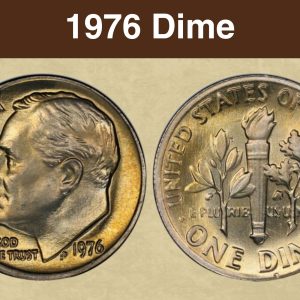
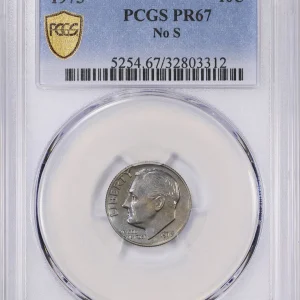
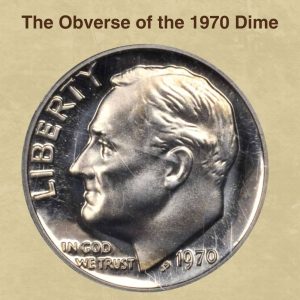
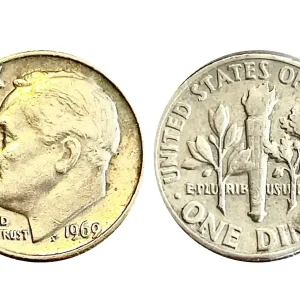
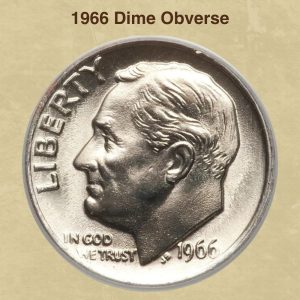
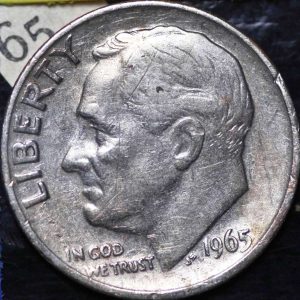
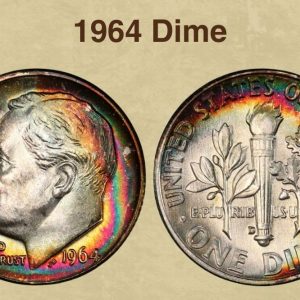
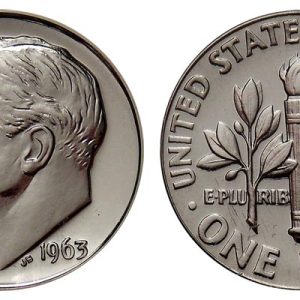
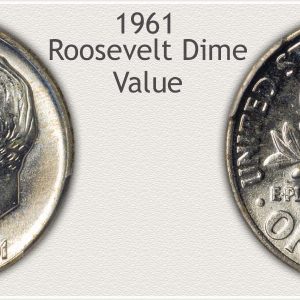
How much is a 1967 dime with no mint mark worth?
A 1967 dime with no mint mark is generally worth its face value of 10 cents, as it was produced in very large quantities at the Philadelphia mint and is a common coin in circulated condition. However, coins in high Mint State (MS) grades, particularly those with “Full Bands” and a sharp strike, are more valuable, potentially ranging from around $8 to over $50 or even thousands for exceptional specimens with Full Bands.
What is the error on a 1967 dime?
Common 1967 dime errors include doubled die obverse, struck off-center, clipped planchet, and missing clad layers. Some examples of doubled die errors show doubling on the date and the “JS” initials, while missing layers can give the coin a penny-like appearance. Dimes with these errors, particularly those in good condition, can be worth more than face value to collectors.
Which dimes with no mint mark are worth money?
Dimes with no mint mark can be valuable if they are 1968-S No-S Proof, 1970-S No-S Proof, or 1982 No-S business strike Roosevelt Dimes, as these are rare error coins. However, most dimes from 1965–1967 lack a mint mark because it was deliberately removed from coins at the time, making them very common and not valuable beyond their face value.
What errors to look for on dimes?
When looking for valuable dime errors, check for coins with a double die obverse, where features like the date or motto are doubled, as well as errors in the striking process, such as an off-center strike or a broadstrike where the collar is missing. Other errors include missing or clipped planchets, missing clad layers, or striking through debris like cloth (a strikethrough error ).